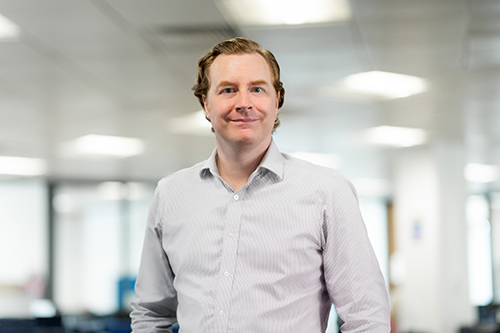Myrtle.ai, a Cambridge start-up, specialises in a combination of hardware and software to optimise ML inference workloads for multiple applications in cloud or enterprise data centres and in edge applications. It has invented accelerator technologies designed for fast and efficient parallel handling of large numbers of matrix and vector multiplications, which is essential for neural network computation.
Having received quotes and provisional counsel elsewhere, Myrtle.ai decided that the quality of advice and value for money offered by Boult was an ideal fit for its growing portfolio. Like so many start-ups, its time and resource are limited. Recognising the importance of this got our working relationship with Myrtle.ai off to a flying start, and we were able to quickly develop a detailed understanding of its invention and its commercial needs.
When working with Myrtle.ai, we focused on business-critical IP and, because of our in-depth knowledge of its business, we are able to write more detailed patent applications that are granted more quickly. Myrtle.ai now has patents covering its key technologies in the areas of ML computational accelerators.
Our relationship continues to go from strength to strength. We are now assisting Myrtle.ai to develop ongoing strategies for managing its IP portfolio and to help it grow through the most efficient filing strategies possible.
Artificial intelligence (AI) and machine learning (ML) are profoundly changing our world – problems considered unsolvable only a few years ago are now becoming possible with AI/ML solutions breaking boundaries and driving extraordinary change in every area of life. AI/ML’s role as a great enabling technology has meant that innovations typically fall into one of two broad categories: those innovations that require fundamental research into new algorithms, training methods and machine learning techniques – sometimes called core AI; and those innovations that explore how to apply AI and ML elements to specific technical problems and application fields, delivering new solutions and outcomes for end users – sometimes called applied AI.
These areas both present their own unique challenges when it comes to IP protection. The digital revolution of the latter half of the 20th century provided not just great advancements in technology and the standard of living, but also led to new legal questions and a fundamental re-evaluation of just what IP should be protectable. Similarly, the ML “big bang” that we are witnessing has already created a gap where IP protection regimes need to catch-up with the pace of technological change. At Boult we have a proud history of taking the long view and striving to make sure the IP protection we put in place is resilient to the changes new technology may impose on the system.
The AI team
At Boult, we’re excited by the potential that AI holds. From fraud prevention to natural language generation, disease diagnostics to self-driving vehicles, we’re thrilled to be working with our clients on projects which are at the cutting edge of AI and ML development.
Our team’s unique skill set spans many application fields, from cryptography and telecoms, through bioinformatics and genetic genealogy, to scientific instruments and computer hardware.
“As Boult has been at the forefront of patenting in this area we have been privileged to get a sneak peak of the future – the recent breakthrough of AI/ML into the public consciousness has been fantastic to see and we know that there is much, much more to come!”

Artificial intelligence (AI) and machine learning (ML) are profoundly changing our world – problems considered unsolvable only a few years ago are now becoming possible with AI/ML solutions breaking boundaries and driving extraordinary change in every area of life. AI/ML’s role as a great enabling technology has meant that innovations typically fall into one of two broad categories: those innovations that require fundamental research into new algorithms, training methods and machine learning techniques – sometimes called core AI; and those innovations that explore how to apply AI and ML elements to specific technical problems and application fields, delivering new solutions and outcomes for end users – sometimes called applied AI.
These areas both present their own unique challenges when it comes to IP protection. The digital revolution of the latter half of the 20th century provided not just great advancements in technology and the standard of living, but also led to new legal questions and a fundamental re-evaluation of just what IP should be protectable. Similarly, the ML “big bang” that we are witnessing has already created a gap where IP protection regimes need to catch-up with the pace of technological change. At Boult we have a proud history of taking the long view and striving to make sure the IP protection we put in place is resilient to the changes new technology may impose on the system.
The AI team
At Boult, we’re excited by the potential that AI holds. From fraud prevention to natural language generation, disease diagnostics to self-driving vehicles, we’re thrilled to be working with our clients on projects which are at the cutting edge of AI and ML development.
Our team’s unique skill set spans many application fields, from cryptography and telecoms, through bioinformatics and genetic genealogy, to scientific instruments and computer hardware.
What sets us apart
We recognise that successful AI innovation often comes out of broad, multi-disciplinary teams – approaching existing problems in a fundamentally different way. Whilst at their heart the AI techniques used are grounded in mathematics and computer software, their application often cannot be viewed as “just” a software problem. The teams we put together for our clients are therefore also often multidisciplinary, bringing together our subject-matter experts across a wide range of technical fields. Our team is also well-versed in how intellectual property offices approach mathematical and computer software concepts.